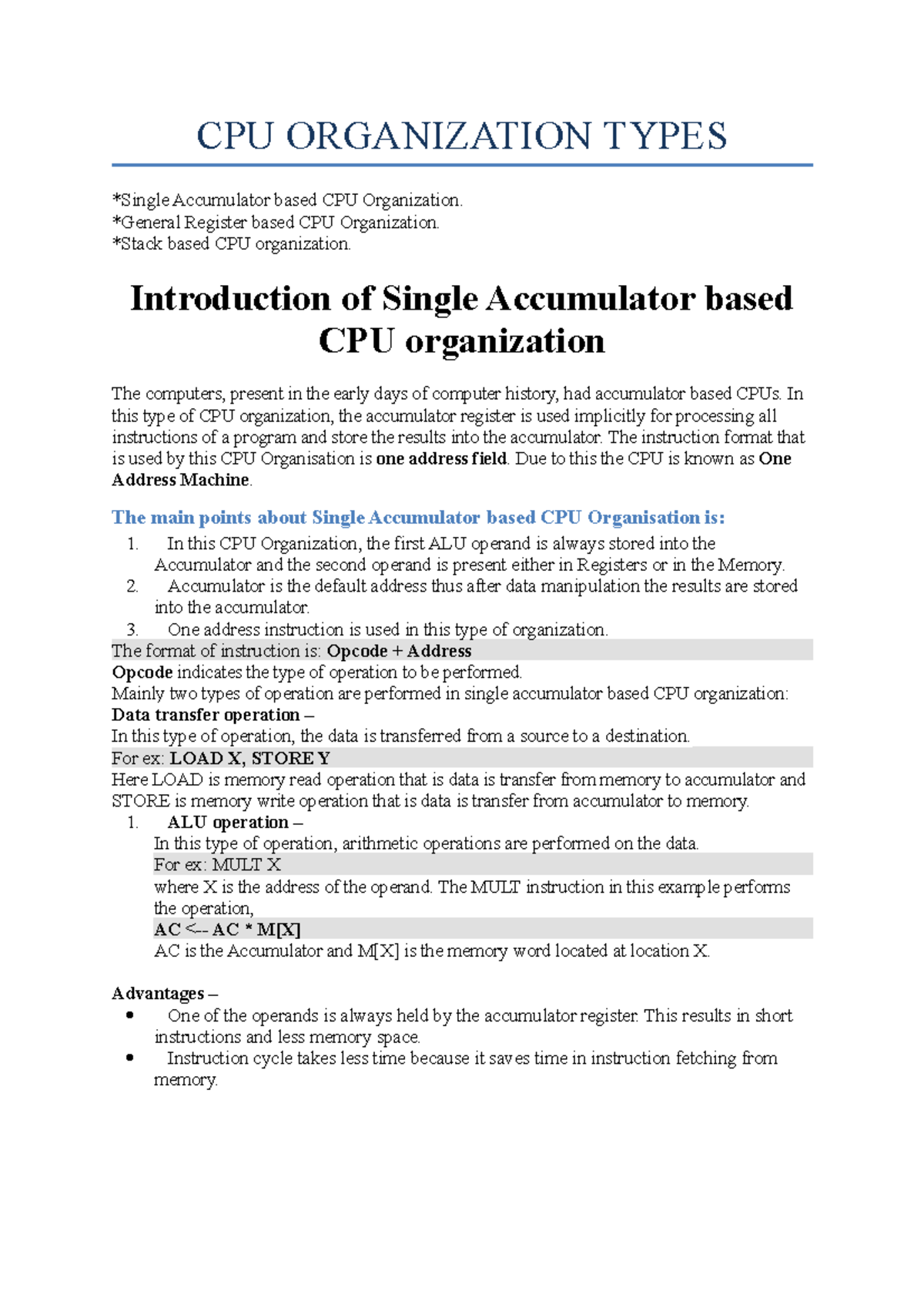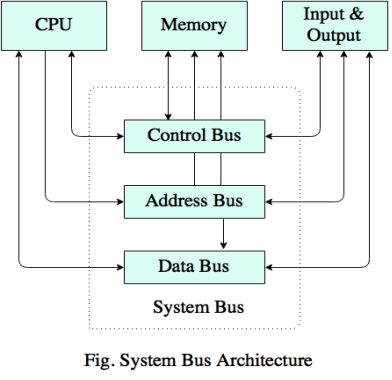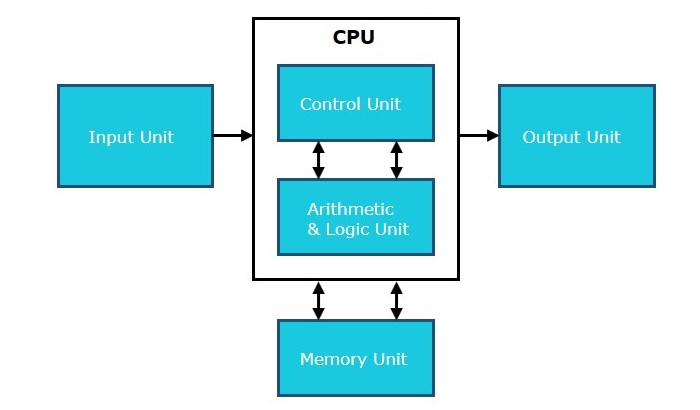Explain Different Types of Cpu Organization
Such computers are made with minimal circuitry mounting over a single circuit board. The different types of CPU registers include.

Cpu Organization Types Cpu Organization Types Single Accumulator Based Cpu Organization General Studocu
With immediate addressing mode the actual data to be used as the operand.

. The register holding the memory location is used to calculate the address of. Think of this as a traffic cop. Computer - Information Technology.
The Fetch Cycle. This resource conflict is said to occur when more than one instruction in the pipe is requiring access to the same resource in the same clock cycle. The number of address fields in the instruction format of a computer depends on the internal organization of its registers.
The instruction format in this type of computer uses one address. Level-2 is directly connected to level-1. Generally there are three types o Interrupts those are Occurred For Example.
This means that both of the ALU operations are always required in the stack. Micro Computers A relatively inexpensive and small computer comprising a microprocessor and a Central Processing Unit CPU is called a Microcomputer. The address in the program counter is moved to the memory address.
Secondscycle CPU execution time is the product of the above three parameters as follows. The data bus is a bidirectional pathway that carries the actual data information to and from the main memory. In Memory-reference instruction 12 bits of memory is used to specify an address and one bit to specify the addressing mode I.
CPU has a fixed clock cycle time 1clock rate Measured in. In a complex and challenging background of the whole country and the NGO sector also the non-profit organizations are established with the aim of providing public services to communities where they operate making them as an intermediary between ci. Micro Operations The primary function of a processor unit is to execute sequence of instructions stored in a memory.
Lets take a look at the different types of addressing modes one at a time now. Whenever CPU requires any word It first searches for the word in level-1. The same stack is also used as the destination.
A accumulator based CPU consists of a data processing unit b program control unit and c memory and IO interface unit. Register - reference instruction. The first type of CPU registers are general purpose registers and the second type is special purpose registers.
A resource here could be the Memory a Register in GPR or ALU. The operation of the processor is described as the performance of a sequence of micro-operation. The computer needs processor registers for manipulating data and a register for holding a memory address.
They are very high-speed printers where the whole line is printed at once. 1 STACK CPU In this organization ALU operands are performed only on a stack data. Level-3 is directly connected to level-2 and so on.
We review their content and use your feedback to keep the quality high. A i In the data processing unit data is processed to get some. The CPU registers can either be programmer accessible and some registers are non-accessible registers to the programmer.
A basic computer has three instruction code formats which are. Types of Addressing Modes. Computer - Personal Computer.
Most computers fall into one of 3 types of CPU organizations. At the beginning of the fetch cycle the address of the next instruction to be executed is in the Program Counter PC. The sequence of operation involved in processing an instruction constitutes an instruction cycle which can be divided into three major phases.
Different Types of Printer. The External Interrupt occurs when any Input and Output Device request for any Operation and the CPU will Execute that instructions first For Example When a Program is executed and when we move the. The CPU registers can be broadly split into two types.
Register - reference instruction. A processor register may hold an instruction a storage address or any data such as bit sequence or individual characters. Memory - reference instruction.
They are considered to be character printer as they print character by character and also computer memory sends one character at a time in series of dots or matrix to create image. Structural hazards arise due to hardware resource conflict amongst the instructions in the pipeline. Generally CPU organization is of three types based on the number of address fields.
The control bus carries the control and timing signals needed to coordinate the activities of the entire computer. View the full answer. Single accumulator organization-All the operations are performed with an accumulator register.
Fetch cycle decode cycle and execute cycle. Zero instruction set computer ZISC Zero instruction set computer ZISC is a computer architecture based on pattern matching and absence of micro-instructions in the classical sense. CPU organization is divided into three types based on the availability of the ALU operands which are as follows here.
OISCs have been recommended as guides in teaching computer architecture and have been used as computational models in structural computing research. CPU time Seconds Instructions x Cycles x Seconds Program Program Instruction Cycle CPU time Seconds Instructions x. Hierarchical Access Memory Organization- In this memory organization memory levels are organized as-Level-1 is directly connected to the CPU.
Described below are the four types of Computers based on their sizes along with their functions. Computer - Data and Information. The registers used by the CPU are often termed as Processor registers.
Memory - reference instruction.

Unit Ii Cpu Organization By Mr S S Hire Cpu Organization Ppt Download


Comments
Post a Comment